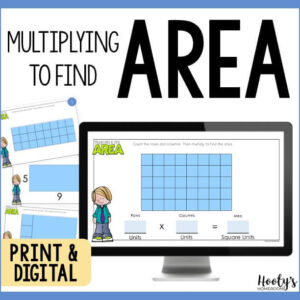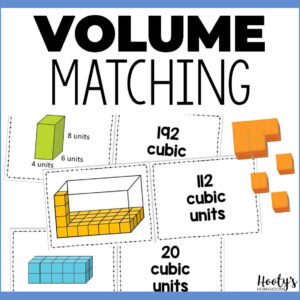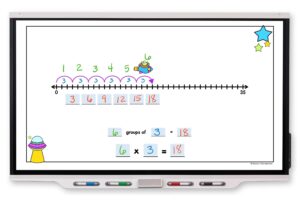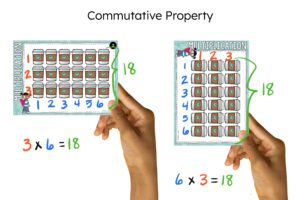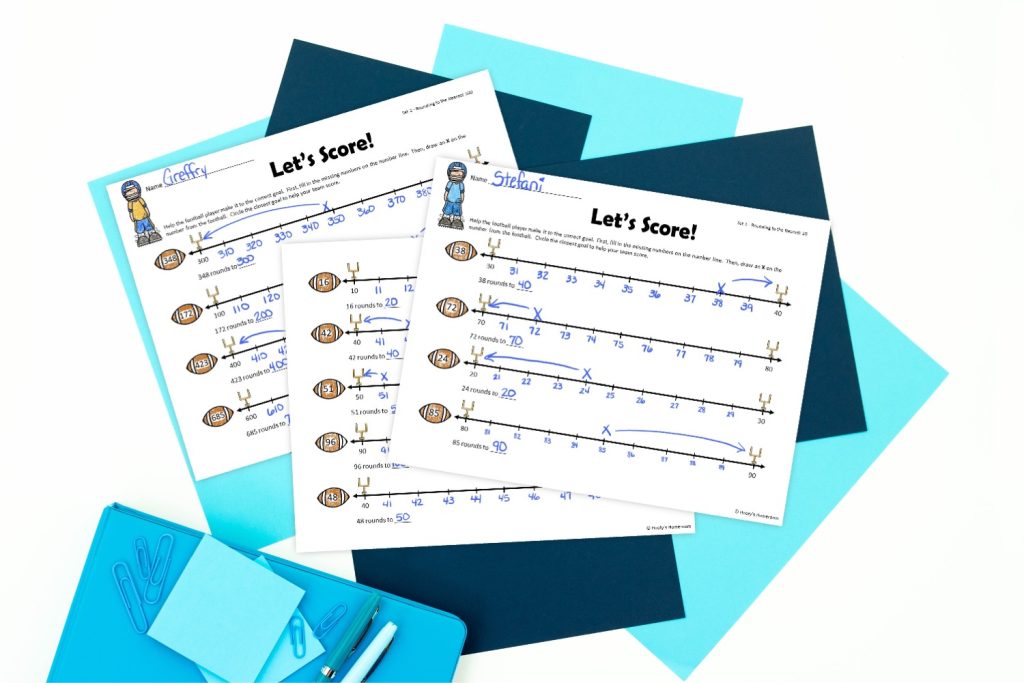
Have you ever wondered why textbooks show rounding with number lines? For some kids, rounding numbers is tricky and confusing. This can be hard for us to understand because rounding makes sense to us. Because of this, teachers have over-relied on tricks and chants to teach this skill. However, rounding with number lines is easy.
I’ll admit that in the beginning, I was that teacher. However, I have since discovered that kids catch on to rounding much faster when using number lines. I’m not opposed to teaching rounding with other methods – I choose not to build my foundation on them. I am a firm believer in teaching multiple approaches to any skill. We all learn differently, and one approach may resonate with a student more than another.
Why I teach rounding with Number Lines
Number lines…
- are great for visual learners.
- provide conceptual understanding.
- support students who lack number sense
Struggling students need number lines for the reasons listed above. They tend to lack number sense. Therefore, they don’t understand why 37 rounds to 40. These students can learn to round with rules, but they usually won’t be able to apply their learning to new situations because they really don’t understand the concept.
Begin with Regular Number Lines

I begin with regular number lines because they provide more visual information, which helps my struggling students.
- First, identify the 2 tens the rounded number falls between and put them on the number line.
- Then, fill in the missing numbers between these two tens.
- Plot the number being rounded on the number line.
- Then, determine which ten the number is closer to.
Continue with Open Number Lines
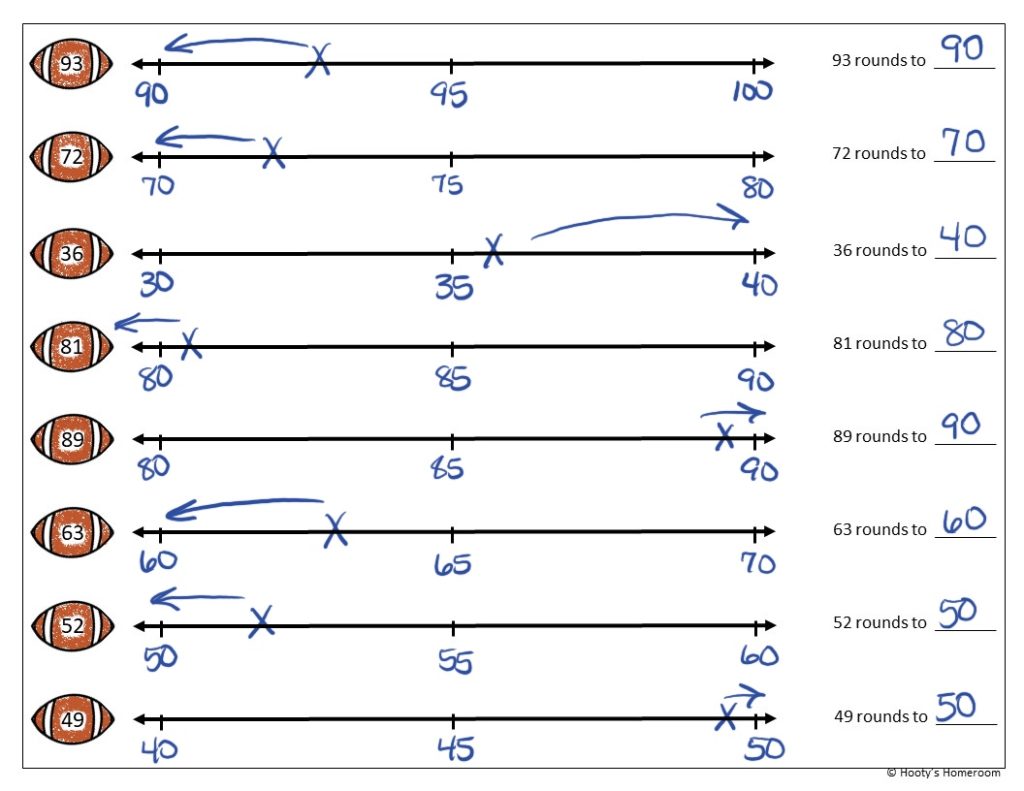
Using regular lines takes time. Once students have a solid foundation with regular number lines, move on to open numbers lines. The steps are similar but much faster.
- First, identify the two tens the rounded number falls between and put them on the number line.
- Label the midpoint of the number line.
- Plot where the number being rounded is approximately located.
- Then, determine which ten the number is closer to.
Once students are comfortable rounding, they naturally want to drop the number lines altogether. Of course, this phase will last longer for some students than others.
When I first started teaching my students rounding with number lines, there weren’t very many resources available, so I made my own. I would love to share some of my rounding worksheets with you. Be sure to grab the free rounding bundle.








